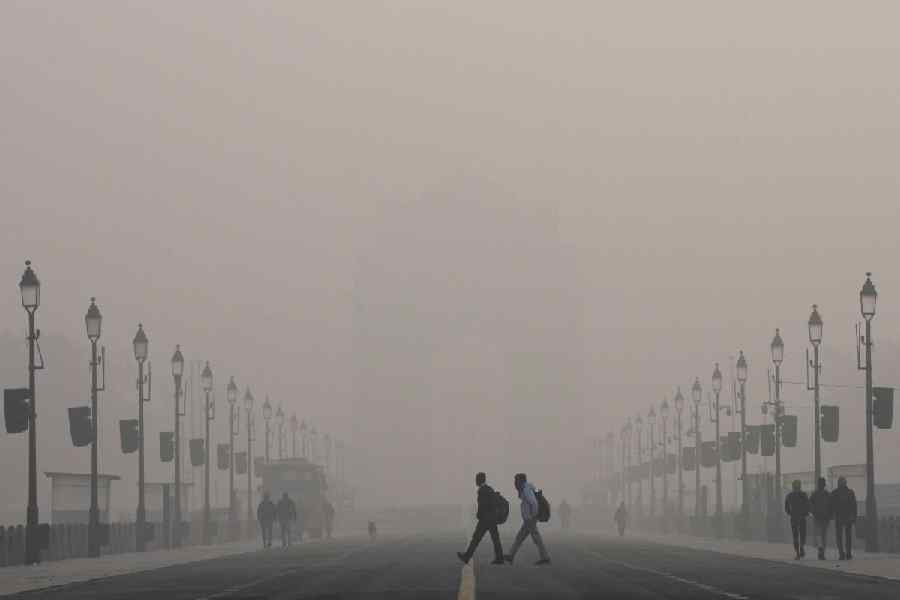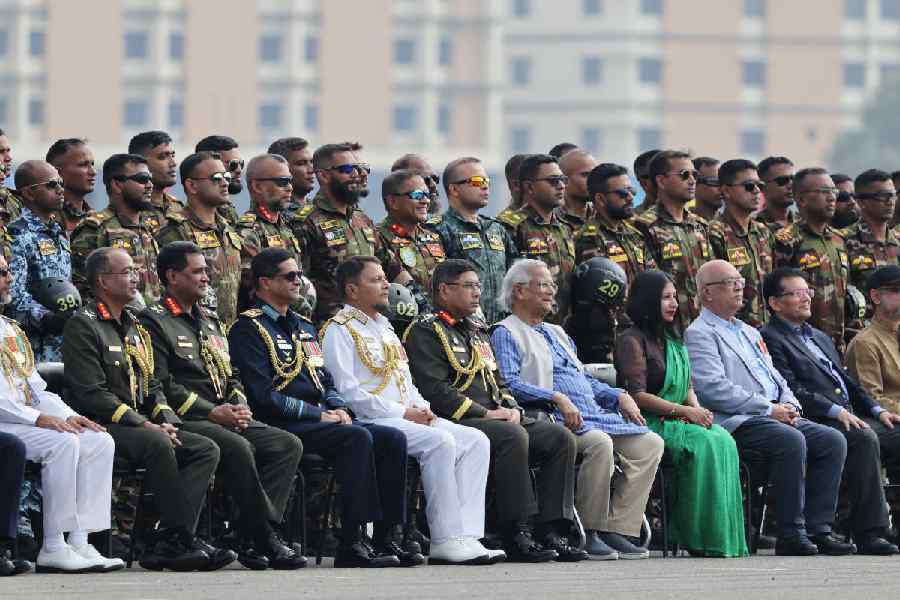Twenty-two artists trained in Calcutta and Santiniketan were hand-picked by Sushobhan Adhikary, the former curator of Kala Bhavana Museum, Visva-Bharati, for the exhibition titled Joy of Bengal held recently at Shridharani Gallery, Triveni Kala Sangam, New Delhi. The photographer, Sanjay Das, was squeezed in. The hybrid exhibition — both online and physical — was organized jointly by Art Magnum, Debovasha and 108 Art Projects. Both well-known names and new practitioners were included. Although the quality of the works was uneven, this show provided fresh evidence of the technical skills of Bengal artists. Needless though it is. The exhibition commemorated the birth centenaries of two greats — Somnath Hore and the printmaker, Haren Das.
Chandana Hore’s watercolours of serene faces express the loneliness of an isolated artist. They stand out on account of their simplicity, a quality whose virtues can never be overstressed. Atin Basak’s temperas on board are bound to attract attention by dint of the glowing shades of yellow he uses to paint his posterish Durga images.
Alay Kumar Ghoshal’s monochromatic watercolours of a town with wooden buildings are adroitly done, although they are more of field notes than paintings. Krishnendu Chaki’s watercolours on silk and handmade paper are evocations of hill stations. The paintings on paper are more finished works while the ones on silk are monochromatic washes that are quite atmospheric.
Sanjay Bhattacharya’s watercolours depict vignettes of life in the villages of Rajasthan and typically portray sheep and goat herds and women at a well to fetch water. His mastery over both drawing and painting is quite obvious from these impromptu works that testify to his power of observation. Even without a riot of colours, Bhattacharya succeeds in suggesting that these are colourful folk. The works of Sekhar Roy and Shampa are rather half-hearted efforts.
Arup Das’s creations give an idea of the figurative work popular in 1970-80, while Niren Sengupta gives Cubism a colourful twist.
The master printmaker, Haren Das, combined a poetic vision of a bucolic idyll untrammelled by industry with technical prowess to create his near-perfect woodcuts on paper. Time cannot shatter their placidity. In sharp contrast are Somnath Hore’s angst-ridden spare lithographs. Here, however, Hore’s study of a nude defined with supple lines has a certain lightness of touch. The flying fledgling has the charm of folk art.
Life around Santiniketan stimulated Reba Hore’s creativity, but her fine pastel-on-paper drawings are more coloured by varying mental states than by her surroundings. Jogen Chowdhury’s lines come alive in these ink-on-paper drawings. Ramananda Bandyopadhyay’s remarkable dry pastel drawing of three beggars is proof of his versatility. Ganesh Haloi’s minimalist works bring to mind sprightly musical notes (picture). Haloi is like a pianist who can tease a Steinway to produce jagged harmonies. Sanat Kar presents his familiar, friendly phantoms and along with them a somewhat disconcerting image of fragmenting bodies in blue and sepia. Rabin Mondal’s mask-like faces are quite different from his primeval visages. Suhas Roy’s damsels and Lalu Prasad Shaw’s Bengalis in retro attire make their appearance for the umpteenth time. Sunil Das’s horses never stop cantering. Our urban scene is unthinkable without Shuvaprasanna’s familiar birds and animals — feral hawks with glowing eyes and an owl with platters for eyes, cats with the strength and grace of pumas and our neighbourhood crows.











